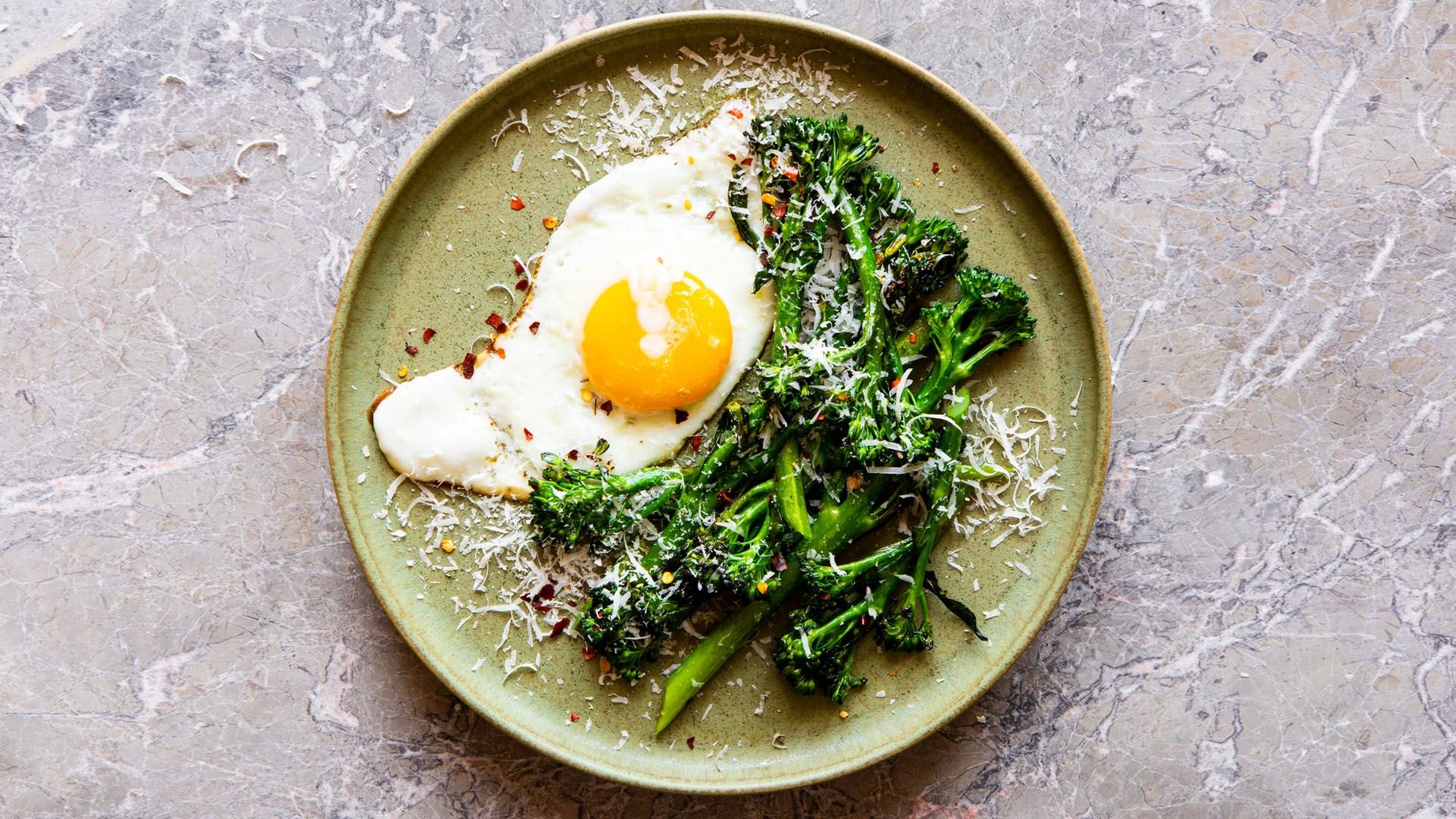Whether you’re a vegan, a pescatarian, a major meat eater, or someone with a super-flexible diet who gets their protein from all kinds of sources, here’s how to choose the best proteins to fuel your body.
Protein Explained
Along with carbohydrates and fat, “protein is a macronutrient that’s essential to our health,” explains Frances Largeman-Roth, RDN, a Dobbs Ferry, New York–based nutritionist and author of the upcoming book Everyday Snack Tray. Regardless of whether the protein is from plants or animals, “our body uses protein to build and repair muscles,” she tells DailyOM. “It also helps keep bones strong, provides a feeling of fullness, and is involved in regulating hormones.”
Interested in learning more? Check out Stop Unwanted Eating Behaviors in 8 Days: 8 Pillars of a Nutritious Life
How Much Protein Does Your Body Require?
How much is enough? This depends on your activity level, age, and other factors, including your goals. For instance, are you aiming to drop pounds or gain strength? Your ideal amount and sources of the best plant-based proteins and best animal proteins for muscle growth will vary slightly compared to someone focusing on the best plant-based proteins and best animal proteins for weight loss.
The 2020 to 2025 Dietary Guidelines for Americans from the U.S. Departments of Health and Human Services (HHS) and Agriculture (USDA) recommends getting 10 percent to 35 percent of your daily calories from protein. On a 2,000-calorie-per-day diet, this works out to 50 to 175 grams per day, which can be attained through all plant proteins, a more omnivorous diet, or your desired version of “flexitarianism” (abstaining from meat occasionally).
When it comes to plant versus animal proteins, you need not necessarily choose one over the other, dietitians tell DailyOM, but of course you can if you like. Read on to discover the healthiest types of protein, whether you choose to chow down on chicken and fish or prefer to let plants take over your plate.
“Eggs are a kitchen MVP. It’s tough to find another protein that is as versatile, affordable, or as easy to cook as an egg.”
3 of the Best Sources of Plant Protein
Plant-based proteins almost always outrank animal proteins in terms of fiber content, affordability, and sometimes antioxidant, vitamin, and mineral levels.
Beans and Legumes
“Beans are some of the healthiest foods on the planet,” says Lauren Harris-Pincus, RDN, founder of Nutrition Starring YOU and author of The Protein-Packed Breakfast Club. “They’re consumed daily in the Blue Zones [including Okinawa, Japan; Sardinia, Italy; and Nicoya, Costa Rica], where people live the longest and healthiest lives.”
The Blue Zones diet, in fact, recommends at least ½ cup of cooked beans per day, since they’re a mainstay in every longevity-linked diet on earth. Those who live in Blue Zones eat four times as many beans per week as the typical American does.
You can’t go wrong with any variety of bean or legume, be it Great Northern beans, kidney beans, chickpeas, black beans, or lentils. Peanuts technically fall under the legume umbrella as well.
In addition to being some of the best sources of plant-based protein, beans and legumes offer a dose of gut health–boosting fiber and fluid-regulating potassium, “which are both nutrients of concern in the American diet,” Harris-Pincus adds.
B vitamins, iron, magnesium and calcium are also found in most varieties of legumes and beans. These are important micronutrients that play a role in energy and oxygen transport throughout the body, blood pressure regulation, bone strength, and more.
Beans and legumes are also versatile and very budget-friendly — full proof that plant-forward eating need not break the bank.
Nuts
Pistachios are among the top selections of plant-based proteins since they offer “all nine essential amino acids that are necessary for supporting active lifestyles and helping maintain balanced nutrition,” according to Harris-Pincus.
Beyond that, research proves that pistachios have a high antioxidant capacity that rivals popular “superfoods” like cranberries, blueberries, and pomegranates. Antioxidants help protect against free radical damage by preventing the oxidation of cells, Harris-Pincus adds, which may lower risk for certain cancers in the long run.
Pistachios are a favorite of Largeman-Roth, but walnuts, almonds, cashews, and pecans (or butters made from them) also provide affordable, shelf-stable, and easily accessible sources of protein, fiber, and heart-healthy monounsaturated fats.
Soy
Whether you get your soy fix from tofu, soymilk, tempeh, edamame, or soybeans, soy is also a complete source of protein containing all essential amino acids. Most plant-forward proteins are incomplete, meaning they contain some, but not all, of the essential amino acids.
A ½-cup serving of soybeans, or edamame, packs 15 grams of protein and 5 grams of fiber to boot, explains Caroline Thomason, RD, a Warrenton, Virginia–based nutritionist and diabetes educator who helps women stop dieting and find confidence with food.
Soy products also come fully loaded with calcium and iron, two features that make it a potent bone-builder, according to Largeman-Roth, making soy one of the best foods for people over 40.
3 of the Best Sources of Animal Protein
Animal proteins usually earn a higher Protein Digestibility–Corrected Amino Acid Score (PDCAAS) than plant proteins do; this means they’re often more “bioavailable” and are more easily digested, absorbed, and utilized by the body. A large meta-analysis published in 2022 in the journal Systematic Reviews suggests that high-quality animal proteins are especially important for maintaining muscle health and strength as we age.
Fish and Seafood
“Not only are fatty fish like salmon and tuna great sources of protein, but they also provide an anti-inflammatory benefit from the omega-3 fatty acids they contain,” Largeman-Roth tells DailyOM. “Studies show that those omega-3 fats also provide brain benefits: increasing blood flow, supporting memory, and benefitting overall cognitive sharpness.”
Harris-Pincus adds that “some types of fish, such as salmon and tuna, are also good sources of vitamin D, which is important for bone health and immune function.”
Eggs
Despite what you may have heard during the low-fat and low-cholesterol boom in the 1990s, it’s A-OK to get cracking. When you do, pretty please don’t toss the yolk.
In addition to providing 6 grams of protein each, and all nine essential amino acids, “the egg yolk holds most of the vitamins and minerals, and the egg whites contain primarily protein,” Thomason tells DailyOM.
Whole eggs deliver vitamin D, vitamin B12, and choline, which are important for brain and bone health, as well as antioxidants lutein and zeaxanthin, which support vision, Harris-Pincus says.
“Eggs are a kitchen MVP for me,” says Largeman-Roth. “From fried eggs for my daughter’s breakfast to topping my lunchtime grain bowl to bringing favorite recipes to life, it’s tough to find another protein that is as versatile, affordable, or as easy to cook as an egg.”
Chicken and Turkey
“For meat lovers who are trying to cut back on the amount of red meat they’re eating, chicken and turkey are a fantastic swap in burgers, tacos, pasta dishes, and more,” Largeman-Roth explains, whether you start with ground, grilled, roasted, or air-fried.
Compared to certain cuts of beef, pork, and lamb, poultry tends to be an affordable, accessible, and versatile form of animal protein. Poultry contains all essential amino acids, is low in cholesterol, and is quite low in fat as well.
The Dietary Guidelines for Americans advises prioritizing lean meat and poultry, suggesting we choose protein such as chicken breast or ground turkey over processed meats, and the American Heart Association advises eating skinless chicken, fish, and plant proteins, because they contain less saturated fat than red meats like beef, pork, or lamb.
Proteins to Enjoy in Moderation
Healthwise, if you don’t have any allergies and you enjoy eating a specific ingredient, all foods can fit into the context of a balanced diet, confirmed the dietitians we spoke to for this article.
While the plant protein and animal protein sources above are your best bets, there’s also room for occasional use of more processed plant-protein products, such as plant-based meat “sausage” or “steak,” or veggie burgers, if you enjoy them, Harris-Pincus says.
Yes, this “in moderation” list even includes animal proteins “that have been previously demonized, like red meat,” Thomason explains. “The American Heart Association states that folks should be able to safely consume red meat twice per week. For all of its controversy, beef is an incredibly nutrient-dense protein source that’s rich in iron, B vitamins, and protein. If you’re concerned about heart health, consider choosing lean sources of beef and limit your servings to twice per week or less.”
It’s wise to limit high-sodium processed meats like bacon, hot dogs, and cured deli meat. Those who eat about 5 ounces of processed meats per week appear to have about 46 percent higher risk for heart disease and 44 percent higher risk for dementia compared to people who eat no processed meats, say UCLA Health experts.
One final category of proteins to limit: smoked meats, such as brisket or ribs, and possibly smoked fish (although more research is required to confirm). The smoking process may increase the concentration of polycyclic aromatic hydrocarbons (PAHs), a compound that has been linked to increased risk for certain cancers, the American Institute for Cancer Research (AICR) confirms.
The Bottom Line
Aim for 10 percent to 35 percent of total daily calorie intake from protein. Feel free to choose all plant proteins, all animal proteins, or, for the best health benefits of protein, a mix of both.
The healthiest plant-based protein sources are options like beans and legumes, nuts, and soy, while your top animal protein choices include eggs, fatty fish, and poultry. Try to pepper some protein into every meal and snack to make each eating occasion more satisfying and to support maximum muscle recovery and energy levels.

